“Amazing Grace” persisted in popularity in England, but it only gained favor in America during the Second Great Awakening, a movement defined by passionate songs and open-air sermons delivered by dynamic leaders to massive crowds. It emphasized emotional conversion, personal salvation, and the individual relationship one can have with God, making “Amazing Grace” a poignant song of choice, since John Newton’s words were those of dramatic, personal testimony.
A Tune Evolves in the American South

It is unknown what melody accompanied the words of “Amazing Grace” when it was first sung in 1773, since it was written without music. Early hymns were simply lyric verses set to a standard meter that could be sung with any tune of the same meter. Beginning in the 1820s, folk music, Negro spirituals, and later, gospel music in the American South greatly impacted the development of the melody most popularly associated with “Amazing Grace” today. But it did not come quickly. The song was constantly changed and adapted until the early 1900s.
The first to publish the well-known melody now used for “Amazing Grace” were Charles H. Spilman and Benjamin Shaw, who published the melody in their Columbian Harmony in 1829. In this songbook, the tune later used for “Amazing Grace” bears its most common title, NEW BRITAIN (to the text “Arise, my soul, my joyful pow’rs”). NEW BRITAIN originated as a folk tune with typical Southern melodic features set to a pentatonic meter to which many hymns could be sung. The first to pair NEW BRITAIN with the words of Newton’s “Amazing Grace” was American Baptist song leader William Walker, in his compilation songbook titled, The Southern Harmony, and Musical Companion.
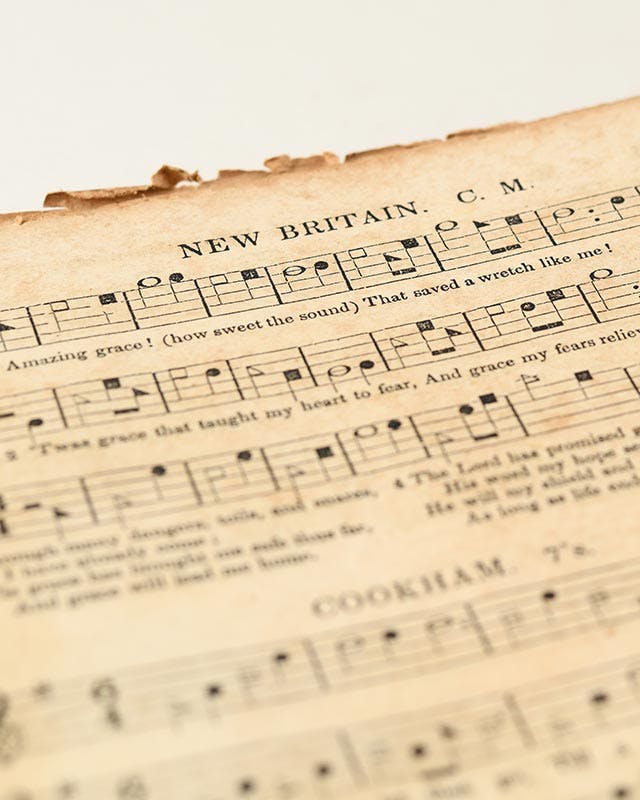
The Southern Harmony, and Musical Companion

Compiled and arranged by William Walker
Published by Thomas, Cowperthwait, and Company/William Walker
Philadelphia, PA & Spartanburg, SC (US)
1845
PBK.004784
In 1835, William Walker was the first to pair the words of “Amazing Grace” with the tune NEW BRITAIN, the melody most associated with the song today.
The Sacred Harp
“Amazing Grace” was also featured in the Southern favorite, The Sacred Harp. This songbook utilized shape notes, a colloquial tradition that developed in rural areas of the American South. This method was created so church congregations, made up of many who could not read traditional music, could sing together in harmony. So-called “shape note singings” were popular throughout the American South and helped perpetuate the spread of “Amazing Grace” as a traditional favorite. Even today, gatherings for shape note singing remain as a cultural and religious component of life in many Southern communities.

Each note has a specific shape that connotes a specific sound. These tonal sounds (called solfège syllables in traditional music) are referenced by their names:
DO, RE, ME, FA, SO, LA, TI, DO.
Scale diagram image created by and courtesy of Wikipedia user Opus33.
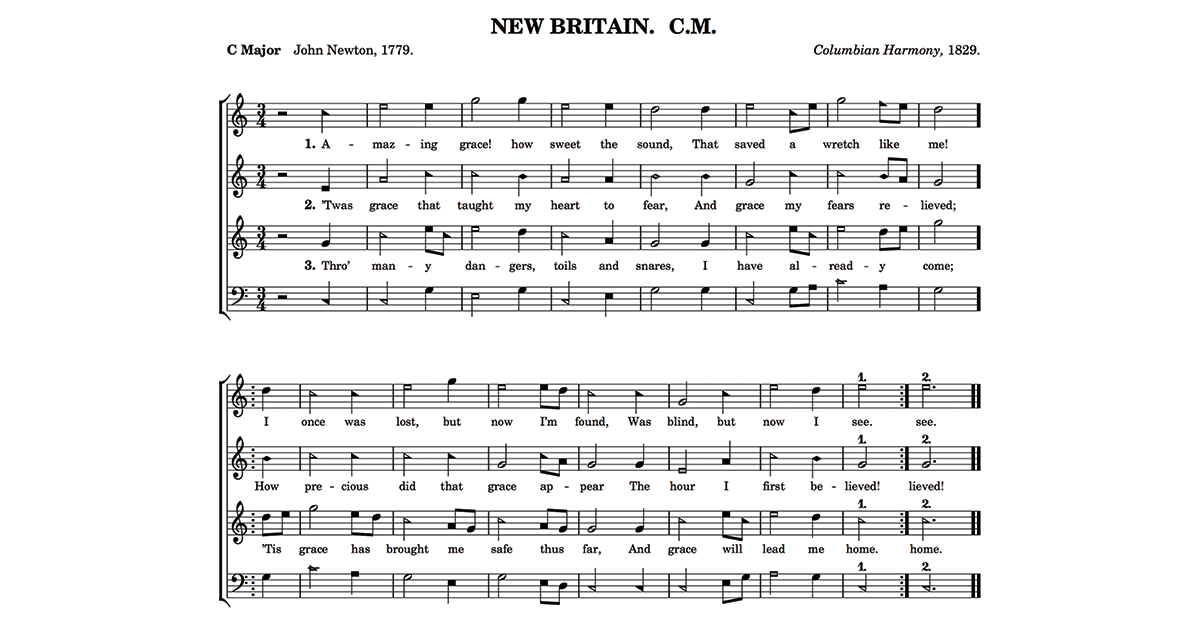
“Amazing Grace” set in shape notes to the tune of NEW BRITAIN.
The melody is in the tenor line.
Image courtesy of Wikipedia user Opus33 with new typeset by Jchthys.
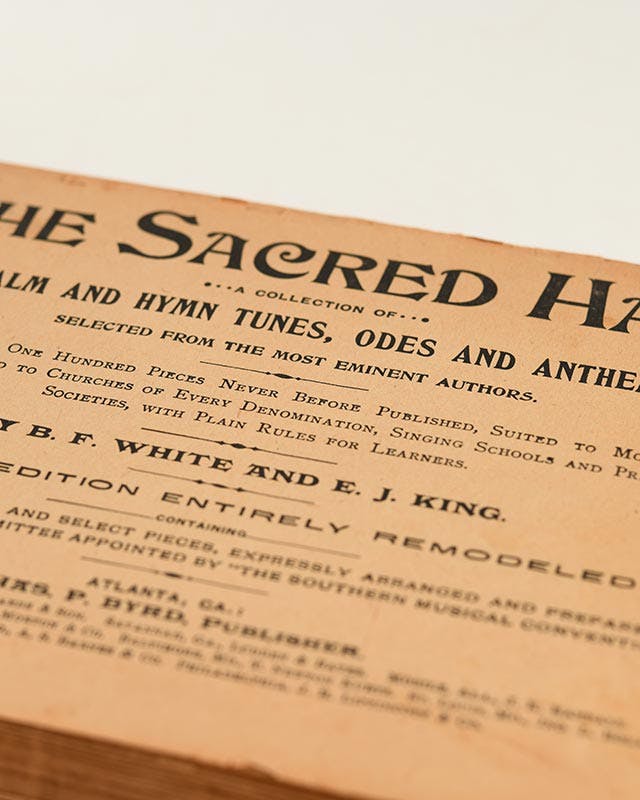
The Sacred Harp

Compiled and arranged by Benjamin Franklin White and Elisha J. King
Published by T. K. & P. G. Collins
Hamilton, GA (US)
1870
PBK.004794
The first edition of The Sacred Harp was published in 1844 and included “Amazing Grace” set to the same tune as printed in The Southern Harmony compiled by B. F. White’s rival, William (“Singing Billy”) Walker, but in a four-part rather than a three-part harmony.
A War Song

During the 1850s in America, the abolitionist movement became an unstoppable force, driving a wedge between the North and South. Both sides claimed “Amazing Grace” as their own. It was an old Southern favorite and a traditional Northern hymn whose melody was easily adapted to fit the local culture. The words, poignant to enemy soldiers for different reasons, could be heard in both camps:
Thro’ many dangers, toils and snares,
I have already come;
’Tis grace has brought me safe thus far,
And grace will lead me home.
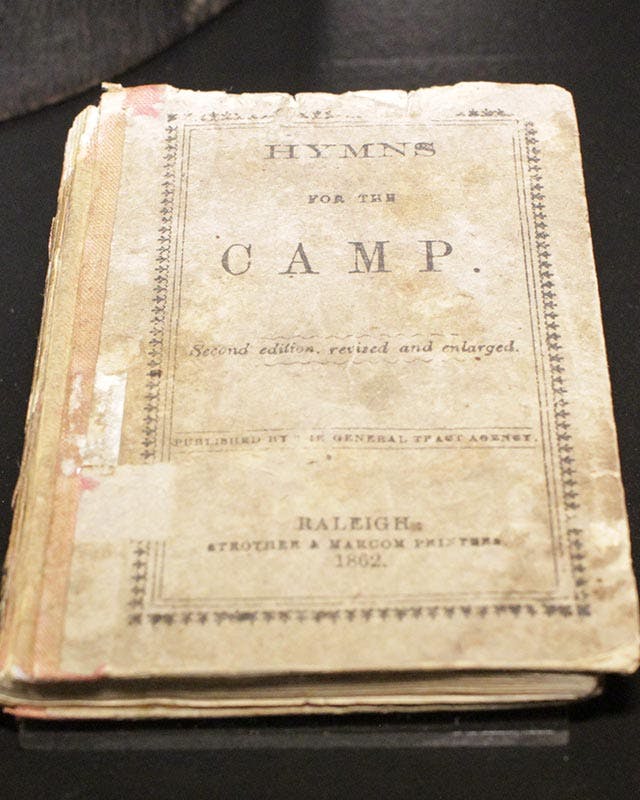
Hymns for the Camp, Second Edition

Published by the General Tract Agency
Strother and Marcom Printers
Raleigh, NC (US)
1862
Owned by Pitts Theology Library of Candler School of Theology, Emory University (1862 HYMN C)
This book was printed in the South and used by Confederate soldiers. Being so close to death, religion was an encouragement in the otherwise bleak world of civil war.
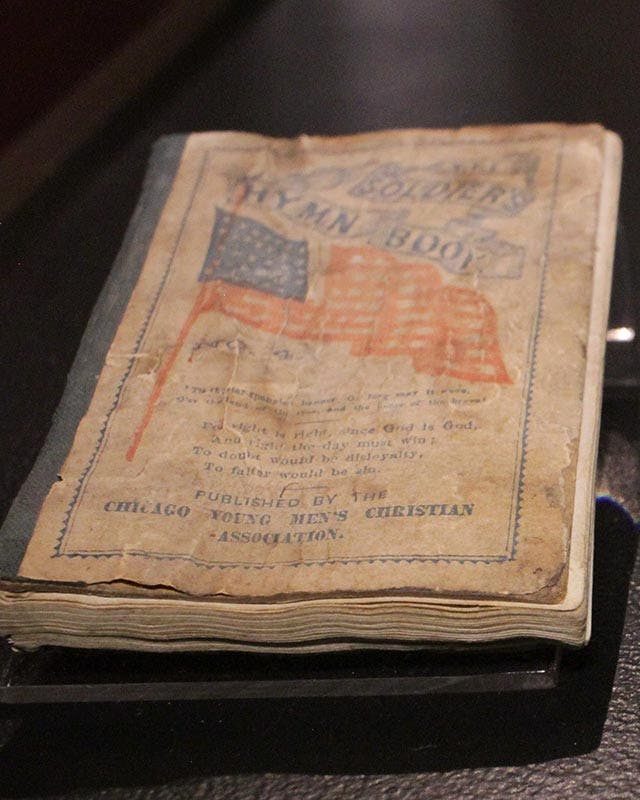
The Soldier’s Hymn Book

The Chicago Young Men’s Christian Association
Chicago, IL (US)
1864
Owned by Pitts Theology Library of Candler School of Theology, Emory University (186-SOLD A)
On the other side of the war, the soldiers in the North also had a hymn book to uplift their spirits and ward off depression. Like Confederate Hymns for the Camp, this Union song book includes “Amazing Grace.”
The Final Stanza
The stanzas of early hymns were often interchanged with stanzas from other songs. Sometimes the words from another song were more appropriate for the struggles of that day, so these would be mixed and matched, set to a tune, and sung. The following stanza, now nearly always sung with “Amazing Grace,” was not present in Newton’s original rendition but was added later (notice the change from singular to plural).
When we’ve been there ten thousand years,
Bright shining as the sun,
We’ve no less days to sing God’s praise
Than when we’d first begun.
This additional stanza had been sung with the song before, but it first appeared in print in the 1851 abolitionist periodical, The National Era, as part of a 40-week serial story called Uncle Tom’s Cabin written by Harriet Beecher Stowe. The series was so popular that Stowe went on to publish the stories in a two-volume book of the same name in 1852. Her work, historically credited as fuel for the North’s abolitionist cause in the 1850s and the spark of the Civil War, openly criticized slavery and the Christian defense of it. The inclusion of “Amazing Grace” in such a novel appropriately reflects the importance of the song in both black and white communities of the day and reinforces the beliefs held by Newton in the fight against slavery.
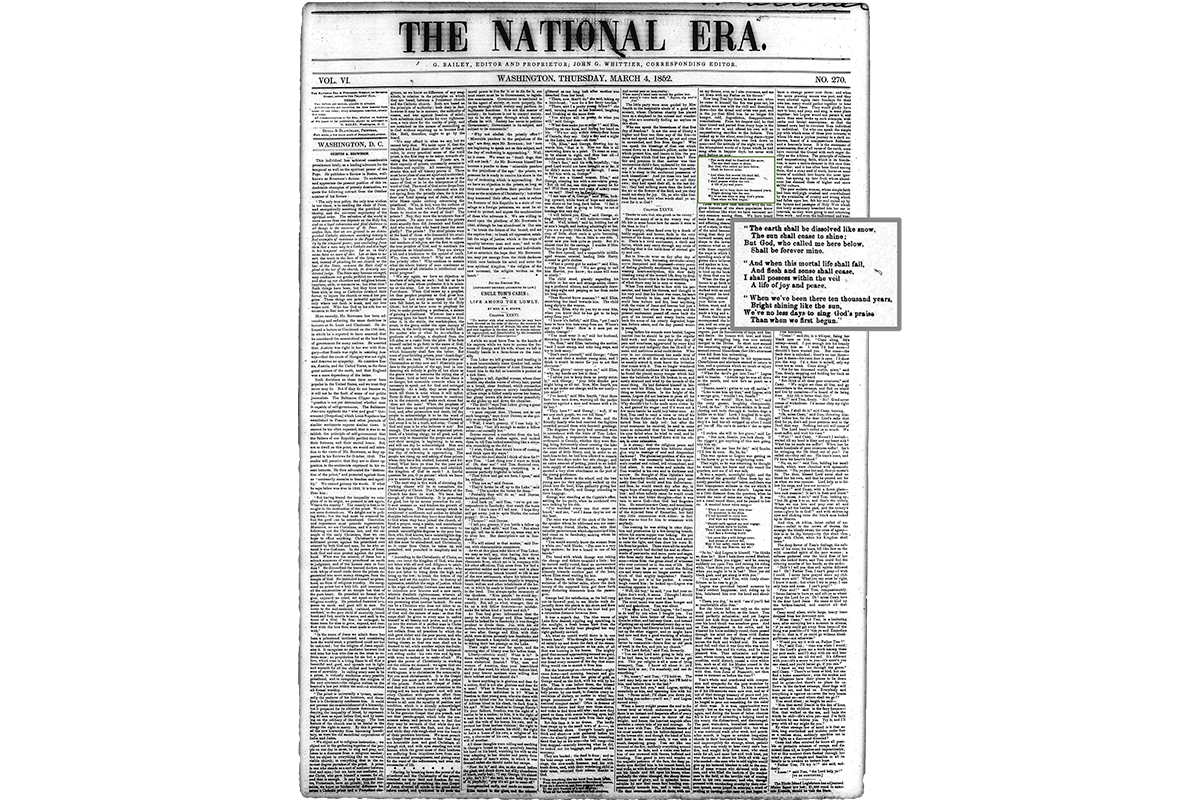
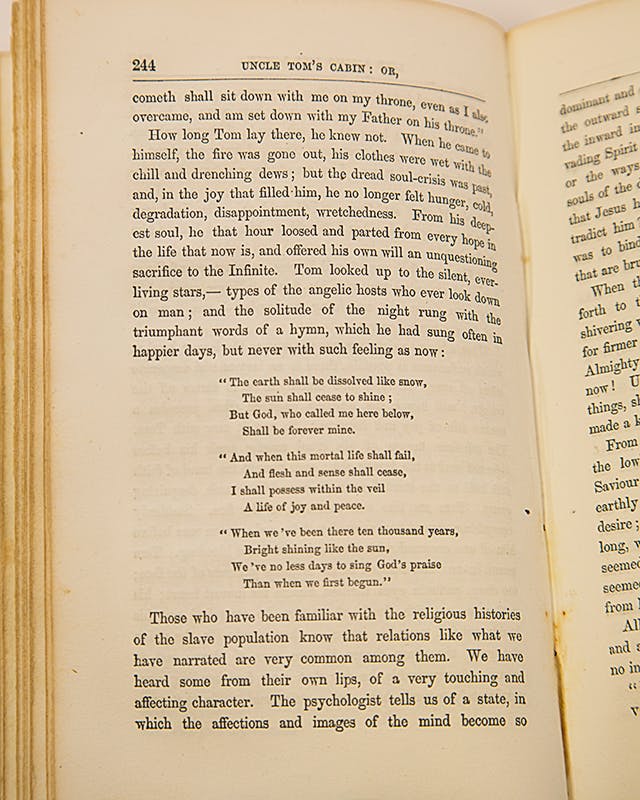
Harriet Beecher Stowe, Uncle Tom’s Cabin, Volumes 1 and 2

John P. Jewett and Company
Boston, MA (US)
1852
PBK.006731
This influential book, featuring the main character of Uncle Tom—a black slave—was so popular it became the best-selling novel of the nineteenth century and the second best-selling nineteenth-century book of any genre other than the Bible. For its day, it was a radical look at slavery, helping to bolster the abolitionist movement. Recent years have seen it criticized for possibly creating or reinforcing racial stereotypes of the period.
The American North
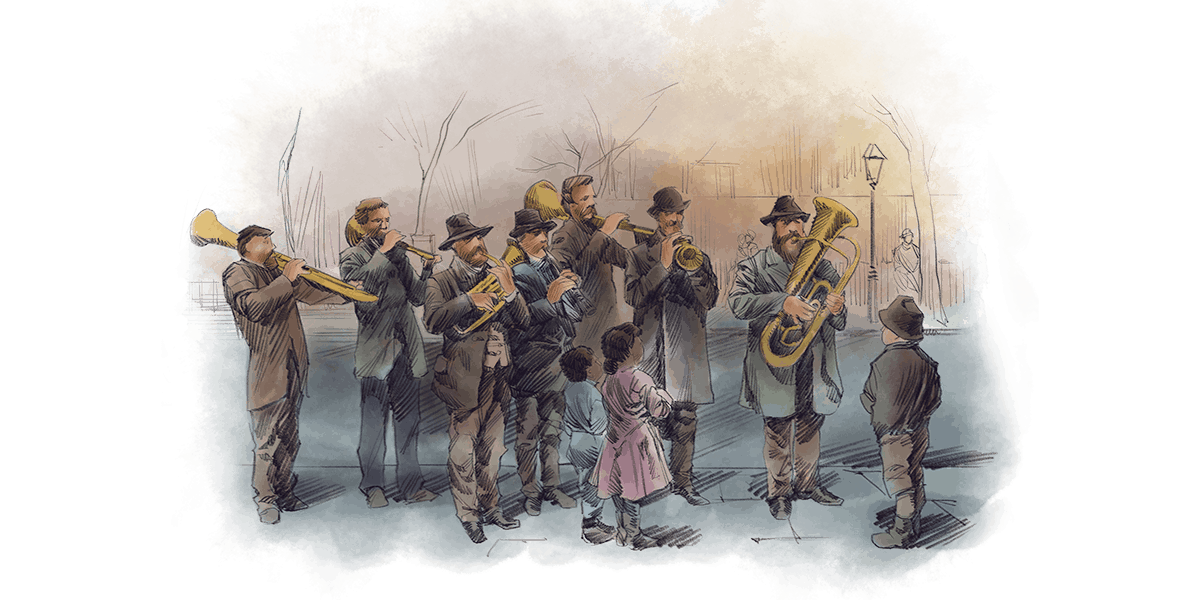
After the Civil War, culture was dictated by the North. One of the most important pieces of culture was music. Northern composers emphasized proper musical notation rather than the shape notes of the South. Additionally, the style of music changed, adjusting the sound of some old Southern favorites, including “Amazing Grace.” Today, the common composition of the song can be attributed to the tedious polishing over many years by composers Ira Sankey and Edwin Othello Excell, who spread “Amazing Grace” through thousands of camp meeting songbooks and congregational hymnals.

Sacred Songs and Solos: with Standard Hymns

Compiled by Ira Sankey, with D. L. Moody
Published by Morgan and Scott
London (England)
1880
PBK.004414
This compilation, first printed in 1877, was popularly known as “Sankey and Moody’s Songs,” and was the first to give the title “Amazing Grace” to the song.
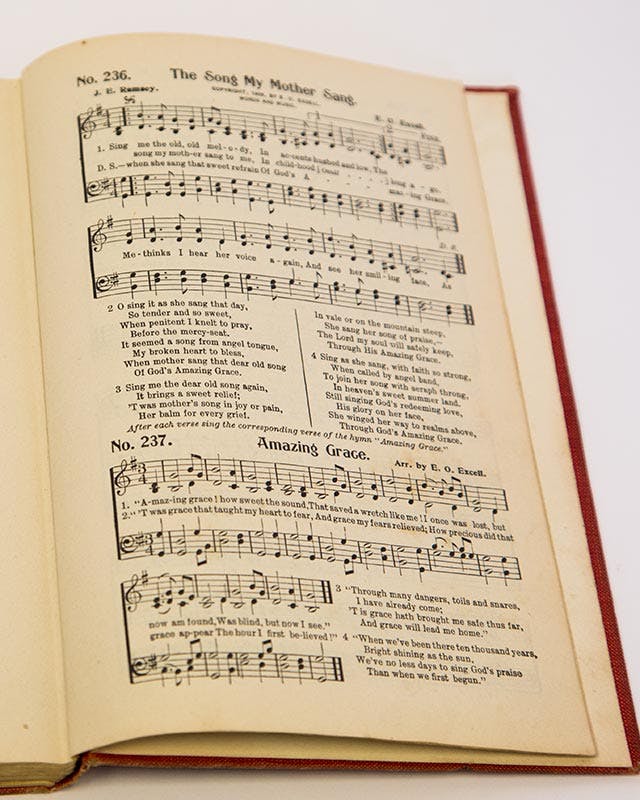
World Renowned Hymns

Compiled and arranged by R. A. Torrey, with E. O. Excell
Montrose Christian Literature Society
Montrose, PA (US)
1909
PBK.003695
This is the first hymn book to include the fourth stanza as seen in Uncle Tom’s Cabin. Excell’s arrangement of “Amazing Grace” in this songbook is likely the most familiar version of the song today.